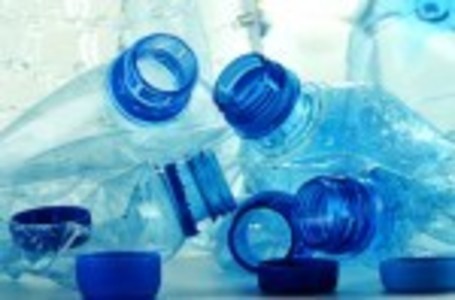For personal reasons, I have been investigating environmental toxins and their effects on hormonal, neurological and reproductive health. The bioaccumulation of Persistent Organic Pollutants (POPs) within our bodies and the proliferation of POPs across the entire planet is frightening, but like most, I was not aware of the dangers. Despite the abundance of research linking POPs to many of the health epidemics we face here in the United States, such as Type II Diabetes and obesity, the public’s attention has not been directed to this man-made creation. Here is some of the research I found on persistent organic pollutants and what is being done to control our exposure to them.
What are Persistent Organic Pollutants?
Persistent Organic Pollutants, or POPs, are a number of organic (mostly man-made) compounds resistant to degradation by natural environmental processes. A number of POPs became widely utilized during the increase in industrial production post-World War II, a time when thousands of chemicals were introduced into commercial use. Many of these chemicals were proven effective in pest and disease control, crop production, manufacturing and industrial processes. Also in existence are a number of POPs which are “unintentionally produced chemicals” as the result of combustion (e.g., trash burning or municipal/medical waste incineration).
Why are Persistent Organic Pollutants So Bad?
Since they cannot be broken down via natural degradation in the environment, they are transported by wind and water. POPs are known for bioaccumulation in human and animal tissue and have become a part of the food chain, affecting all life on earth. Isolated communities, such as indigenous populations in the Arctic Circle, have a particularly high exposure risk to POPs. POPs have been linked to disruption of our endocrine, reproductive and immune systems, neurological problems, diabetes, obesity and cancer. According to The United Nations Industrial Development Organization (UNIDO), the international community has been calling for “urgent global actions to reduce and eliminate releases of these chemicals.” A number of POPs are compounds the reader may be familiar with, such as DDT, PCBs, and HCH.
“The Dirty Dozen” and the Stockholm Convention
Coordinated by the United Nations Environment Programme (UNEP), The Stockholm Convention serves as “a global legally-binding instrument for targeting persistent organic pollutants.” The purpose of the Convention is to direct us toward a future free of POPs and re-shape the global economy in order to eliminate reliance on such dangerous pollutants.
The Convention initially identified twelve POPs (“The Dirty Dozen”) considered to be the most detrimental to the well-being of humans, animals and the environment. This measure created a system that allows for a greater number of chemicals to be identified as “unacceptably hazardous.” In accordance with the Convention, governments are obliged to eliminate or reduce the introduction of POPs into the environment. Such is done by channeling resources into “cleaning up existing stockpiles and dumps of POPs that litter the world’s landscapes.” The Convention was ratified May 17, 2004, with 150 signatory countries. As of February 20, 2013, Afghanistan acceded to the Convention as its 179th party. According to Kyoto Energy, the Convention aims to prohibit the production of POPs, with the exception of equipment currently in use; they have set a deadline for the elimination of the remaining usage for 2025.
Destroying and Transforming POPs in the Environment
The UNIDO website suggests that POPs stockpiles “must be destroyed in a manner which does not further degrade the environment by generating or releasing POPs.” The Convention calls for community participation, safety of the community, full disclosure of information, monitoring and release of data.
Details regarding the destruction process on the UNIDO website are vague; they suggest that traditional methods use “landfilling, ground storage, deepwell injection and combustion by open burning, incineration or in cement kilns or metal furnaces.” UNIDO stresses that there are “serious limitations” to the “normal incineration process,” considering that incineration can lead to the creation of dioxins, PCBs and HCBs. The quantities of POPs are rather difficult to estimate; almost no inventory exists. Kyoto Energy estimates that one million tons of PCBs and 100,000 tons of obsolete pesticides exist within countries that are not member to the Organization for Economic Co-operation and Development (OECD).
Are We Burying POPs for Future Generations?
Many of these methods do not entirely eliminate the problem. Rather, we are, quite literally, burying them for future generations to deal with – if we don’t burn this stuff and release it into the atmosphere first.
The United Nations Environment Programme (UNEP) suggests that high temperature incinerators, incineration in cement kilns and chemical treatment are proven methods of destruction. There is no evidence of this being true, and most research indicates that POPs are created as a result of incineration.
A number of countries have continued to produce POPs such as DDT, with a staggering 3,314 tons (7,306,119 pounds) produced globally in 2009. On the bright side, this signifies a 43% reduction in DDT production from 2007. Considering the stability of POPs (i.e., resistant to degradation), it’s difficult to imagine any concerted effort can “undo” the damage that has already been dealt to the planet, especially since a number of POPs like DDT continue to be produced and exported in such exorbitant quantities.
It’s time to rethink our reliance on dangerous chemicals and the industries that use them. Though, many of these chemicals were developed before we understood their dangers, now that we know, it is difficult to support their continued use. With all of the advances in science, one would think we could design better, safer tools for industry, than the non-degradable, persistent organic pollutants we have now.














